Starting your photography journey can be exciting, but with so many gear options available, it’s easy to feel overwhelmed. You don’t need the most expensive equipment to take great photos—just the right essentials to get started. Here’s a guide to the must-have photography gear for beginners to help you capture stunning images.
A good camera is the foundation of photography, but you don’t have to buy the most advanced model right away. Here are some beginner-friendly options:
Lenses impact your image quality more than the camera body. Start with these versatile options:
A sturdy tripod helps eliminate camera shake and is crucial for low-light, landscape, and long-exposure shots. Look for:
A fast and reliable memory card ensures your camera can store high-quality images without lag. Consider:
A good camera bag keeps your gear safe and organized. Some great options include:
Built-in camera flashes often create harsh lighting. An external flash, like the Godox TT600, allows for softer, more natural-looking images.
Dust and smudges can ruin your photos. Keep a cleaning kit handy with:
Post-processing enhances your photos. Start with:
Photography drains battery life fast, especially in cold conditions. Always carry at least one spare battery for your camera.
A remote shutter release helps with long-exposure shots, self-portraits, and reducing camera shake. Look for:
When starting out, focus on mastering the basics rather than accumulating expensive gear. A good camera, a versatile lens, and a few accessories will set you up for success. As you grow, you can upgrade your kit to match your evolving photography style.
Happy shooting! 📸✨

Discover high quality photography products and tools for your photography journey.
© Copyright 2025 BestPhotographyResources. All rights reserved. Powered by Sitefy

Get 10% off by signing up to our newsletter.
Your information will never be shared to anyone